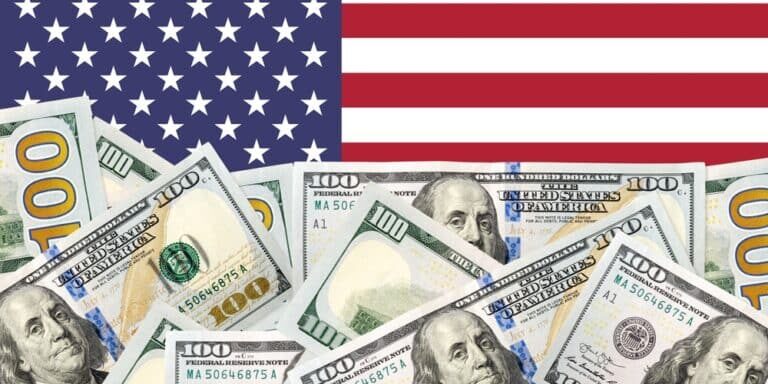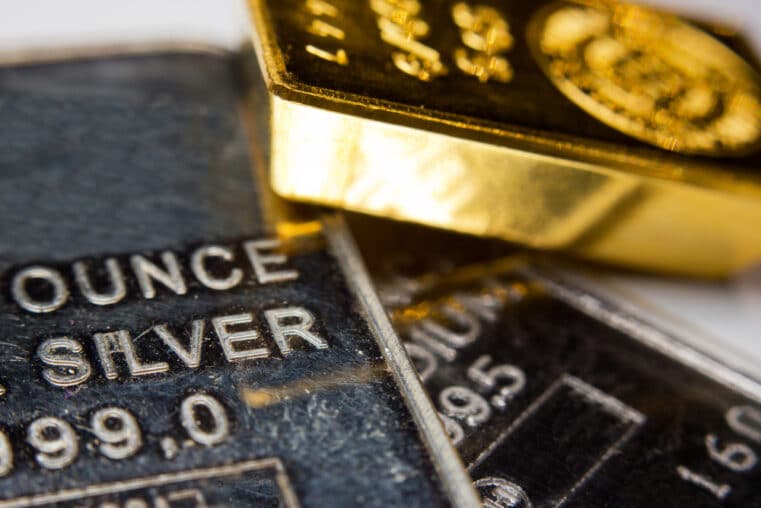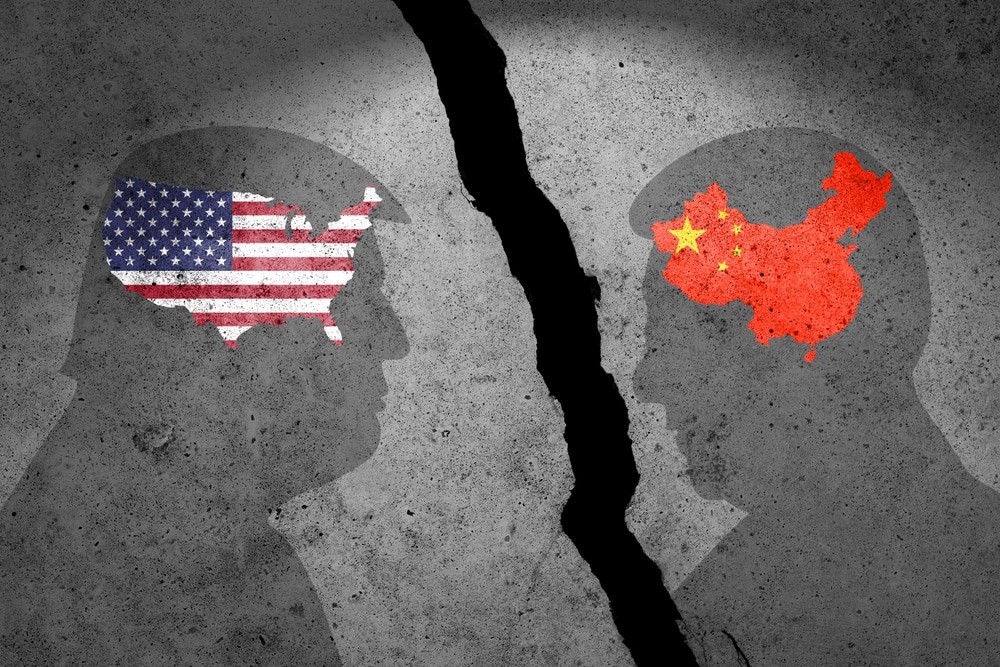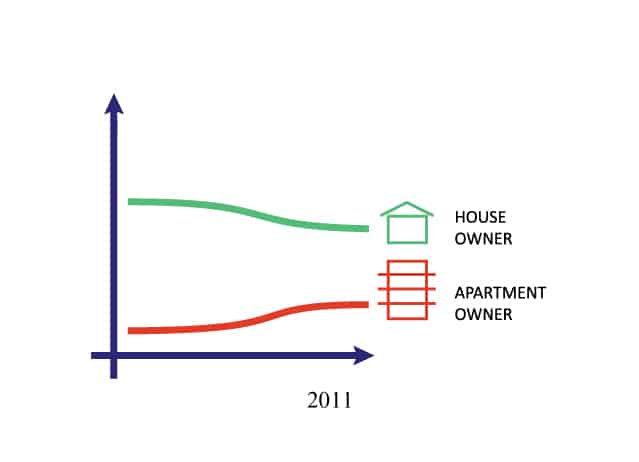
Democrats Love Spending, Gold Loves Democrats
The U.S. dollar tends to appreciate under Democratic presidents, while gold’s biggest gains and losses happen between election day and the inauguration, according to Matt Weller, Global Head of Research at Forex.com.
“[M]ajor elections bring the potential for significant changes to laws, domestic priorities, and international relationships, and markets often rein in risk appetite ahead of major elections,” Weller wrote in a new historical analysis on the market impacts of U.S. elections. “However, once an election is decided – regardless of the result – traders have a clearer picture of how the future will look and often feel more comfortable once the uncertainty is resolved.”
Weller said his aim was “to provide context for how markets from the US dollar to the stock market to gold have historically reacted to different US political environments” and warned that regardless of where you are on the political spectrum or in the market, “political events can cause significant market volatility and increase risks.”
Weller’s first area of focus is the U.S. dollar. “In what will become a common refrain throughout this guide, it’s important to remember that politics alone are rarely a strong driver for currency values,” he wrote. “The primary factors that drive the long-term trends in the US Dollar – things like interest rates, trade balances, and capital flows – are either entirely or mostly out of the control of the President.”
That said, the data show “some notable small-sample tendencies in the performance of the US dollar depending on the political party of the US president over the past few decades. As the chart below shows, the US Dollar Index has shown a tendency to fall during Republican presidencies and rise during Democratic presidencies dating back to George H. W. Bush in 1988.”

“As with any historical market data, changing the timeframe can change the conclusion,” Weller acknowledged. “[T]he greenback generally fell throughout Democratic President Jimmy Carter’s term from 1976-1980 and rose during Republican Ronald Reagan’s first term from 1980-1984 before reversing those gains in his second term.”
Weller also cites a study published in Review of Financial Economics which found intra-term patterns depending on which party held the presidency:
“We examine the association between the foreign exchange rate of the US dollar and US presidential cycles,” the authors wrote. “Results show that Republican presidencies tend to start with a strong dollar, which then depreciates over the course of the presidency. In contrast, Democratic presidencies tend to begin with a weak dollar that then appreciates. These patterns result in an apparent presidential effect in US foreign exchange rates.”
Weller said that being aware of these kinds of historical patterns is only useful if they continue into the future. “Without a clear causative explanation, readers may want to be skeptical about putting too much stock (no pun intended) into trading around them in isolation,” he said.
The second area Weller analyzes is the stock market, and he begins by noting that the broader index generally rallies regardless of who wins.
“Before delving too deeply into the specifics, it’s important to remember one key fact when analyzing the impact of US elections on the stock market: Broad stock market indices like the S&P 500 usually rise, regardless of who is in office,” he said. “Since 1961, the S&P 500 has generally seen positive returns across presidential terms, with Richard Nixon and George W. Bush being the only two exceptions in the last 60+ years.”

“[I]t’s important to remember that hundreds of millions of Americans (and billions of citizens around the globe) will still wake up the next day and trudge off to work, contributing to continued profitability and innovation at the large companies that make up the stock market,” Weller added.
“Getting a bit more granular, many analysts have identified a potential 4-year Presidential Cycle, where stock market returns have historically been lower in the first half of a President’s term before relatively strong third and fourth years in office,” he wrote. “The general explanation for this theory is that when a newly-elected President takes office, he often focuses on fulfilling campaign promises around non-economic priorities like social welfare issues before pivoting back to boosting the economy to bolster his chances of getting re-elected (or getting members of his party re-elected).”

Weller shared a chart showing the performance of the S&P 500 over the long term which demonstrates this pattern, but noted that “like many published market anomalies, the relationship has been less clear in recent years.”

The makeup of Congress also appears to have an impact on the stock market, he said. “Perhaps not surprisingly, under both Democratic and Republican Presidents, the best annualized returns for the S&P 500 have been realized under a divided Congress, where one party controls the House or Senate and the other party holds a majority in the second chamber.”

“Historically, the S&P 500 has also seen lower returns on average during periods when Democrats have held majorities in both the House of Representatives and the Senate, though the market has generally seen positive returns regardless of the composition of the national government,” he added.
The third focal area of Weller’s analysis is gold, and here the correlation between the presidency and the yellow metal’s performance is less clear than with the dollar or equities.
“Looking at the chart below, gold rallied strongly under both Republican and Democratic US Presidencies throughout the 1970s until 1982, when it then fell under both parties until 2000,” he noted. “The precious metal then started a new secular bull market [that] continued regardless of the President’s party for the next couple decades.”

“Drilling down to a shorter-term timeframe, gold’s performance in the period immediately after a presidential election has shown a slight tendency to favor of the Democrats,” Weller said. “According to the U.S. Money Reserve study, Democratic victories saw an average gold price increase of +0.5% versus an average drop of -1.1% in the two weeks after a presidential election since 1980.”
He said this discrepancy is even larger between Election Day and Inauguration Day. “Democratic presidential election wins have led to an average gold price increase of +1.5%, while Republican wins brought a -5.5% decrease on average, perhaps on the assumption that Republican presidents will place a greater emphasis on fiscal conservatism and decreased government spending.”

“The majority of these short-term impacts has been driven by gold’s strong performance immediately after Barack Obama’s elections and weak performance following Ronald Reagan’s elections, so readers may (once again) want to take these trends with a grain of salt,” he cautioned.
Weller concludes with a caveat that the party occupying the White House and controlling the Congress represents only a small part of what drives stocks, the dollar, and gold.
“Though the historical returns highlighted above cover decades (and in some cases, more than a century) of price action, it’s important to remember that [the] absolute number of presidencies included are still relatively small and markets are constantly evolving,” he said. “For some readers, the uncertainty leading up to a close election can provide potential trading opportunities, but the direct impact of elections on markets is often exaggerated, especially by those with strong political views. Still elections can cause significant market volatility and increase risks.”
This article originally appeared on Kitco News.











